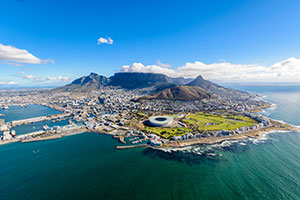9-Nights Namibia Luxury Train Journey

9-Nights Namibia Luxury Train Journey
Africa
African Travel, Inc.
Vacation Offer ID 1466701
Reference this number when contacting our travel specialist.
African Travel, Inc.
Namibia Luxury Train JourneyThis nine-day luxurious train journey aboard the Rovos Rail traverses from the savannahs of the highveld to the Atlantic Ocean. Travel through space and time as you visit Kimberley, site of one of the world’s famous diamond rushes, stare into the abyss of Fish River Canyon – second in size only to the Grand Canyon. The wide-open spaces of the Kalahari and Namib Desert will invite you in and the desert adapted wildlife species of the game-rich Etosha National Park will delight you– an unforgettable journey to a remarkable land.
Explore the mine village of Kimberley, one of the world's famous diamond rushes.Discover Fish River Canyon, second in size to the Grand Canyon and Garas Park with its Quiver Tree Forest.Experience the dunes of the stunning Namib Desert and its 5 million year old red sandEnjoy game drives through Etosha National Park and its incredible desert adapted species such as elephant, lion, giraffe, the bat-eared fox and the black-back jackal.
1. ROVOS RAIL, South Africa, Cape Town
2. SOSSUSLEI LODGE, Sossusvlei
3. MOKUTI ETOSHA LODGE, Namibia, Etosha National Park
Featured Destinations
Valid Date Ranges
Price is per person, based on double occupancy, land arrangement only. International and internal air is additional. All pricing and accommodations are subject to availability.
All fares are quoted in US Dollars.





